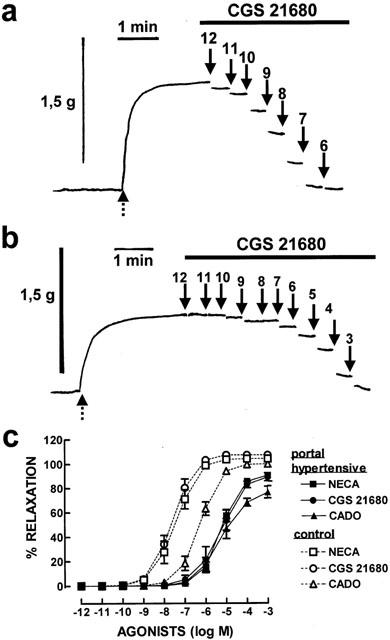Figure 2.

Modification of the potency of adenosine receptor ligands in cranial mesenteric arteries from portal hypertensive compared to control rabbits. In (a) and (b) are shown contractile recordings illustrating a cumulative concentration-response curve of the effect of CGS 21680 in cranial mesenteric arteries from control (a) and portal hypertensive rabbits (b). The mesenteric artery rings were pre-contracted with noradrenaline (10 μM, as shown by the dashed arrows in a and b). Then, a cumulative concentration-relaxant response to increasing concentration of CGS 21680 was carried out, as indicated by the upper bar in (a) and (b), and the recordings correspond to the last 30 s of recording out of each of the 5 min of recording after starting the superfusion of each concentration of CGS 21680, whose concentration is presented (as −log concentration) above each arrow. In (c) are shown the average results in preparations of control (open symbols, dashed lines) and portal hypertensive (filled symbols, filled lines) rabbits of the cumulative concentration-response curves with increasing concentrations of the selective A2A receptor agonist, CGS 21680, with the mixed A1/A2 receptor agonist, NECA, and with the closest non-metabolizable adenosine analogue, CADO. The data are mean±s.e.mean of 5 – 6 experiments.
